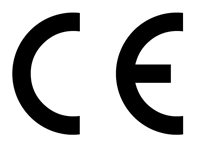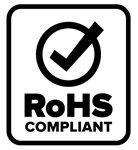Many customers have asked about the safety, health and environmental regulations that cover products that Static Control sells, especially in Europe where there are strict guidelines and stiff penalties for not complying with environmental directives.
From our toner and inkjet cartridge line to each individual component and toner, our products are made with the aim of the highest quality with the lowest environmental impact.
Navigating through the many global rules and regulations for businesses can get a bit overwhelming. Static Control has created this handy guide to help you through some of the requirements that our in-house manufacturing operations, along with every vendor and supplier we use, must achieve. Each one of these directives is mandatory. Static Control also randomly tests our vendors to ensure compliance with our strict standards.
Global Standards
Are your manufacturing facilities ISO 9001 & 14001: 2015 Certified?
Yes! The International Organization for Standardization (ISO) develops voluntary international standards for businesses, industry and government. Static Control's manufacturing facilities are certified to ISO9001:2015, Quality Management System Requirements, and ISO14001:2015, Environment Management System Requirements.
European Standards
What does the CE marking I see on my products mean?

Most electronic equipment sold today has the distinct CE mark on it. Never noticed? Flip over your smartphone and you’ll more than likely see it. The mark is an abbreviation of Conformité Européenne (French for European Conformity) and it is a certification mark that indicates that the products meet specified health, safety and environmental protection standards for certain products sold within the European Economic Area (EEA). Because it covers any of those products that are manufactured or sold in the large EEA region, people outside of that area (even in the United States) will be familiar with its marking.
A product with the marking indicates that it is in compliance with the requirements of the relevant European health, safety and environmental protection legislation, such as RoHS and REACH. For toner cartridges, this means that cartridges cannot contain more than 0.01% of Cadmium and its components and less than 0.1% of the following: Lead and its compounds; 2) Mercury and its compounds; 3) Hexavalent Chromium and its compounds; 4) Polybrominated Biphenyl (PBB); 5) Polybrominated Diphenyl Ethers (PBDE); 6) Benzyl butyl phthalate (BBP); 7) Di(2-ethylhexyl)phthalate (DEHP); 8) Dibutylphthalate (DBP) and 9) Diisobutyl Phthalate (DIBP).
What is RoHS?

It’s an abbreviation that stands for Restriction of Hazardous Substances and it is a directive for the European Union that limits certain chemical substances from appearing in electrical equipment (including both toner and inkjet cartridges which are microchipped). Some of the chemicals limited include lead, cadmium, mercury, hexavalent chromium, deca-BDE, polybrominated biphenyl, and more. Failure to comply with RoHS standards can lead to significant fines depending on which country you are located in the European Union.
Within the imaging aftermarket, the issue of compliance has been of utmost importance since it was discovered in mid-2018 that some aftermarket cartridges contained an elevated level of a prohibited fire retardant. To address this issue, Static Control has implemented more rigorous testing and auditing practices. Also, we test random samples of products to ensure our vendors remain compliant to our standards. Our vendor agreement is crystal clear in setting our requirements and the penalties for failing to meet them.
All of Static Control’s products sold in the European Union meet RoHS requirements.
What is REACH?
This stands for Registration, Evaluation, Authorization and restriction of Chemicals and is a regulation from the European Union. It requires manufacturers, importers and also their customers to communicate information on chemicals throughout the supply chain and it impacts all products sold in the EU, including both toner and inkjet cartridges. Some of the chemicals regulated include known carcinogens such as cobalt and ammonium dichromate.
Failure to comply with REACH standards can lead to significant fines depending on which country you are located in the European Union.
All of Static Control’s products sold in the European Union meet REACH standards.
 What is WEEE?
What is WEEE?
WEEE stands for Waste from Electrical and Electronic Equipment and it mandates the treatment, recovery and recycling of electric and electronic equipment. All applicable products in the EU must pass WEEE compliance and have the “wheelie bin” icon. RoHS impacts the substances used to manufacture equipment, while WEEE regulates the disposal of the same equipment.
All of Static Control’s products sold in the European Union meet WEEE standards.
United States Standards
What is California Proposition 65?
The official name is the Safe Drinking and Toxic Enforcement Act of 1986; Proposition 65 requires businesses to provide a warning to residents of the state of California about significant exposures to chemicals that cause cancer, birth defects or other harms. The list includes approximately 900 chemicals and is updated once a year. The list includes additives, pesticides, common household products, foods, drugs, dyes and more. To see the list of all chemicals included, click here:
https://oehha.ca.gov/proposition-65/proposition-65-list
Penalties for violating Proposition 65 can lead to fines of $2,500 a day.
All Static Control products sold in the United States meet this standard.
What is the US Toxic Control Substances Act?
The Toxic Substances Control Act of 1976 provided the EPA with authority to require reporting, record-keeping and testing requirements, and restrictions related to chemical substances and/or mixtures. It addresses the production, importation, use and disposal of specific chemicals including polychlorinated biphenyls (PCBs), asbestos, radon and lead-based paint.
To learn more about the chemicals covered by the TSCA, click here:
https://www.epa.gov/chemicals-under-tsca
All Static Control products sold in the United States meet this standard.
Asia-Pacific Countries Standards
What is China RoHS?
China RoHS (Restriction of Hazardous Substances), officially known as Administrative Measure on the Control of Pollution Caused by Electronic Information Products, is a Chinese government regulation to control certain

materials, including lead, mercury, cadmium and more.
All items shipped to China now have to be marked as to whether the items contained in the box are compliant or non-compliant. The Electronic Information Products (EIP) logo or other label is used to mark parts and assemblies that contain acceptable amounts of substances identified by the regulations, and that are environmentally safe. Units that do contain hazardous substances are marked with the EIP logo including an Environment Friendly Use Period (EFUP) value in years.
All Static Control products sold in China meet this standard.
What is Japan RoHS?
Japan RoHS law combines the Japanese Recycling Law (Law for Promotion of Effective Utilization of Resources in Japan) with the JIS C 0950 standard (marking for the presence of the specific chemical substances for electrical and electronic equipment) and is referred to as J-MOSS. Japan RoHS restricts the same six substances in the same concentration limits as EU RoHS 2, but for only seven product categories.
All Static Control products sold in Japan meet this standard.
What is Japan’s Basic Policy on Promoting Green Purchasing?
The Government of Japan put the Act on Promotion of Procurement of Eco-Friendly Goods and Services by the State and Other Entities (Act on Promoting Green Purchasing) in force in 2001 to expand the market for environmentally friendly products. The act requires that government agencies and public institutions implement green public procurement.
We specifically refer to section 5-6 which deals with toner and inkjet cartridges. Some of the criteria include ensuring the chemical safety of the toner is confirmed, along with photosensitive components (such as the OPC drum) does not include cadmium, lead, mercury, selenium and more.
Read the entire policy here:
https://www.env.go.jp/en/laws/policy/green/h31bp_en.pdf
A Reliable Supplier
With the many global environmental certifications needed to legally sell products around the globe, it is important to rely on a supplier who is relentless in their commitment to the law and safety standards. Static Control is the imaging aftermarket leader in providing premium cartridges, components, replacement chips and toner that meet the necessary standards for your part of the world.
Have a question or need to know more?
Contact us and we’ll be glad to help.